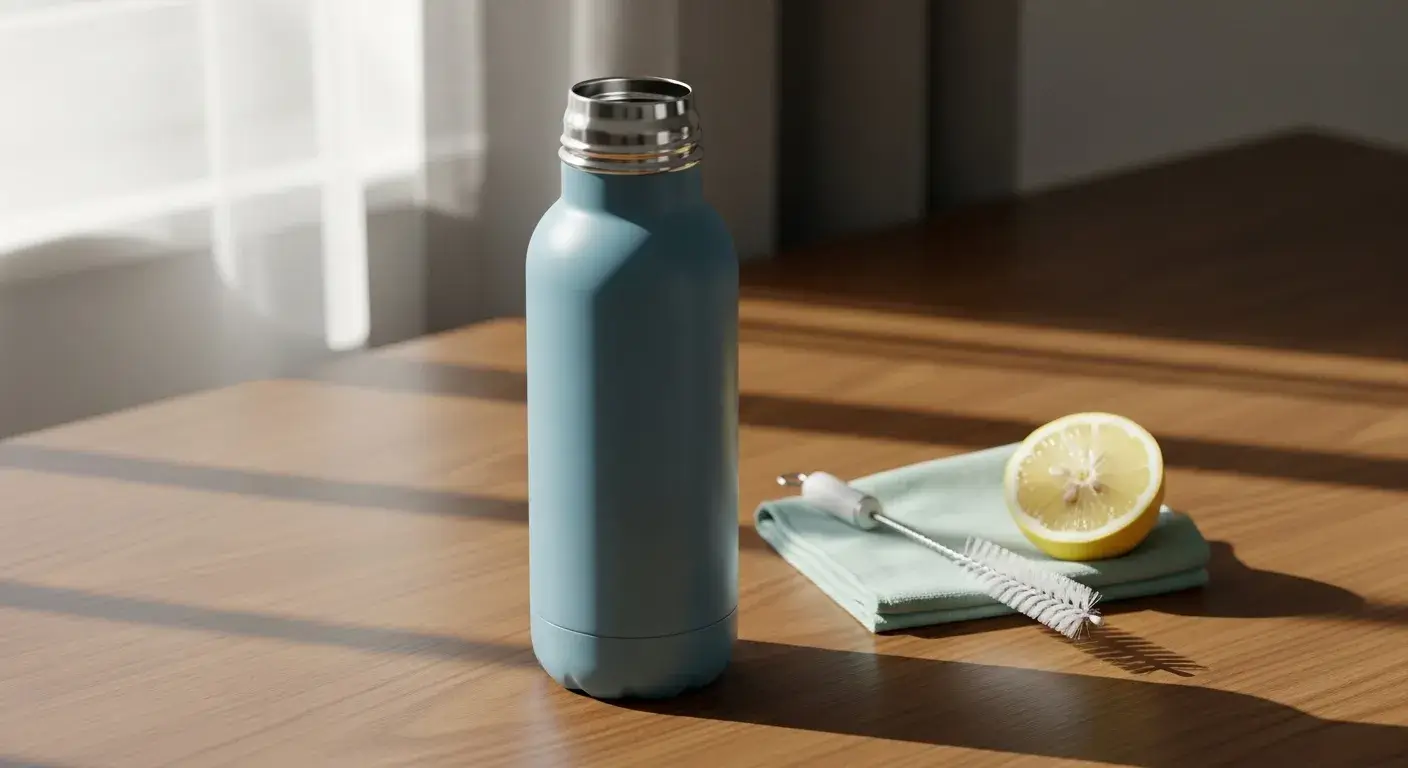
Worried about bacteria or chemicals in your bottle? Here's how to keep it safe for years.
Reusable water bottles are generally safe for long-term use if cleaned daily and replaced when worn, especially for stainless steel or glass materials.
Here's what affects safety, how long bottles last, and what signs to watch for.
How long can you safely use a reusable water bottle?
It depends on material and maintenance.
Stainless steel bottles typically last up to 3 years, while hard plastic bottles are safe for about 1 year with regular cleaning.
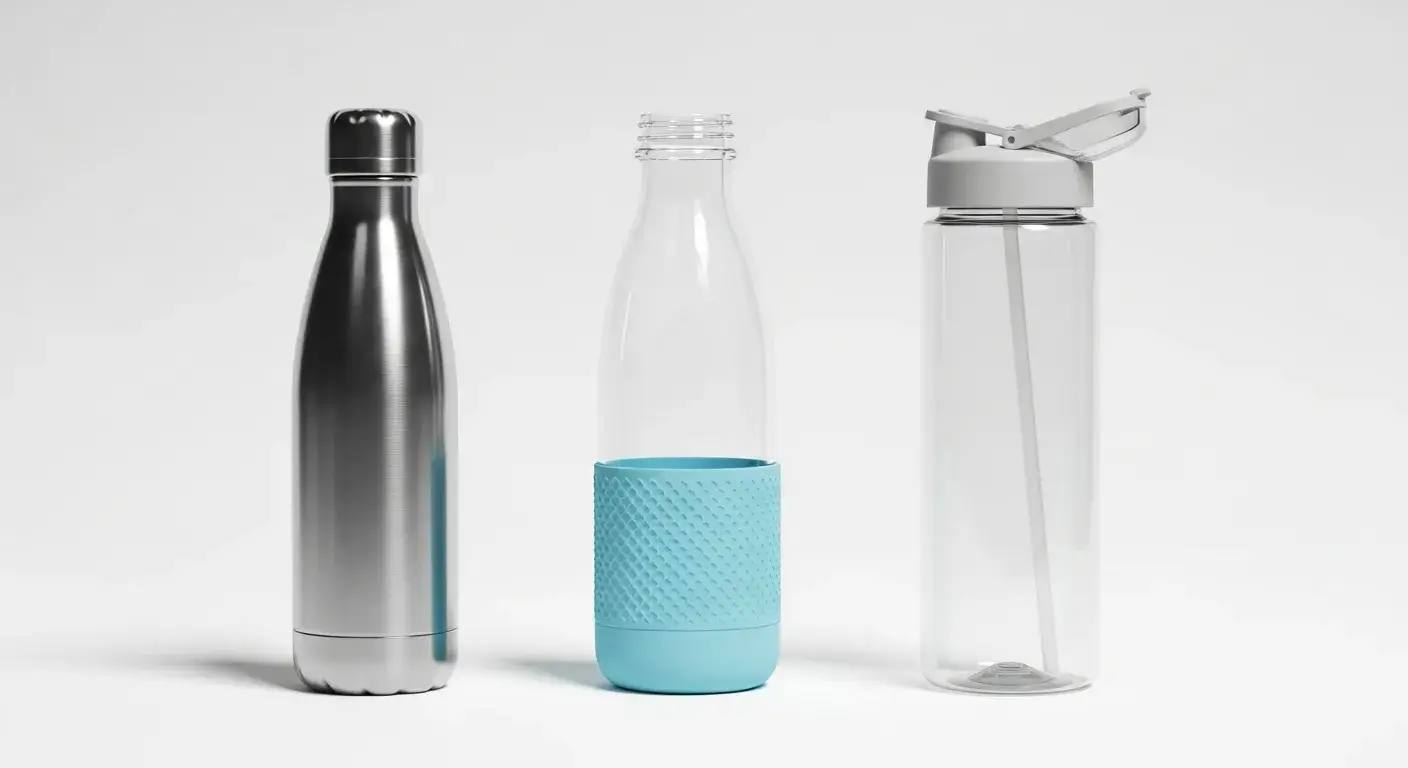
Bottle Lifespan by Material
| Material | Typical Safe Lifespan |
|---|---|
| Stainless Steel | ~3 years |
| Glass | ~2–3 years (if intact) |
| Hard Plastic | ~1 year |
| Single-Use PET | Not safe to reuse |
Replace earlier if cracks, odors, or damage appear.
What are the health risks of using a reusable water bottle for too long?
Neglect leads to contamination.
If not cleaned regularly, reusable bottles can harbor bacteria and mold that may cause gastrointestinal infections.
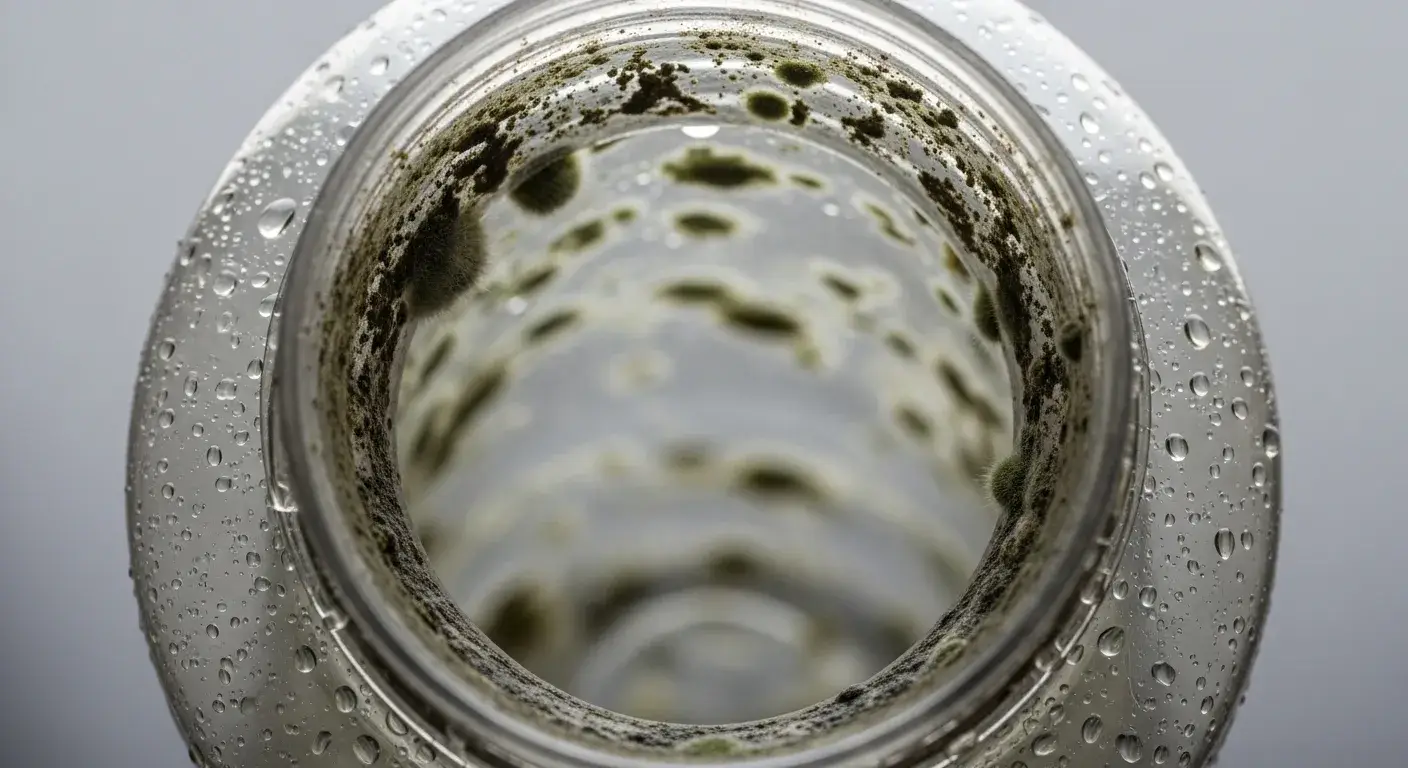
Health Risks from Dirty Bottles
- Bacterial biofilms can form1 in 1–2 days
- Common bacteria: E. coli, Staphylococcus, Pseudomonas
- Chemical risks from plastic leaching, including BPA and phthalates2
- Mold buildup in hard-to-reach areas like caps or straws
Health experts advise daily cleaning to prevent these issues.
How does the material of the bottle affect its safety and lifespan?
Material matters more than you think.
Stainless steel and glass are non-porous and resist bacteria; plastic bottles degrade faster and can leach chemicals over time.
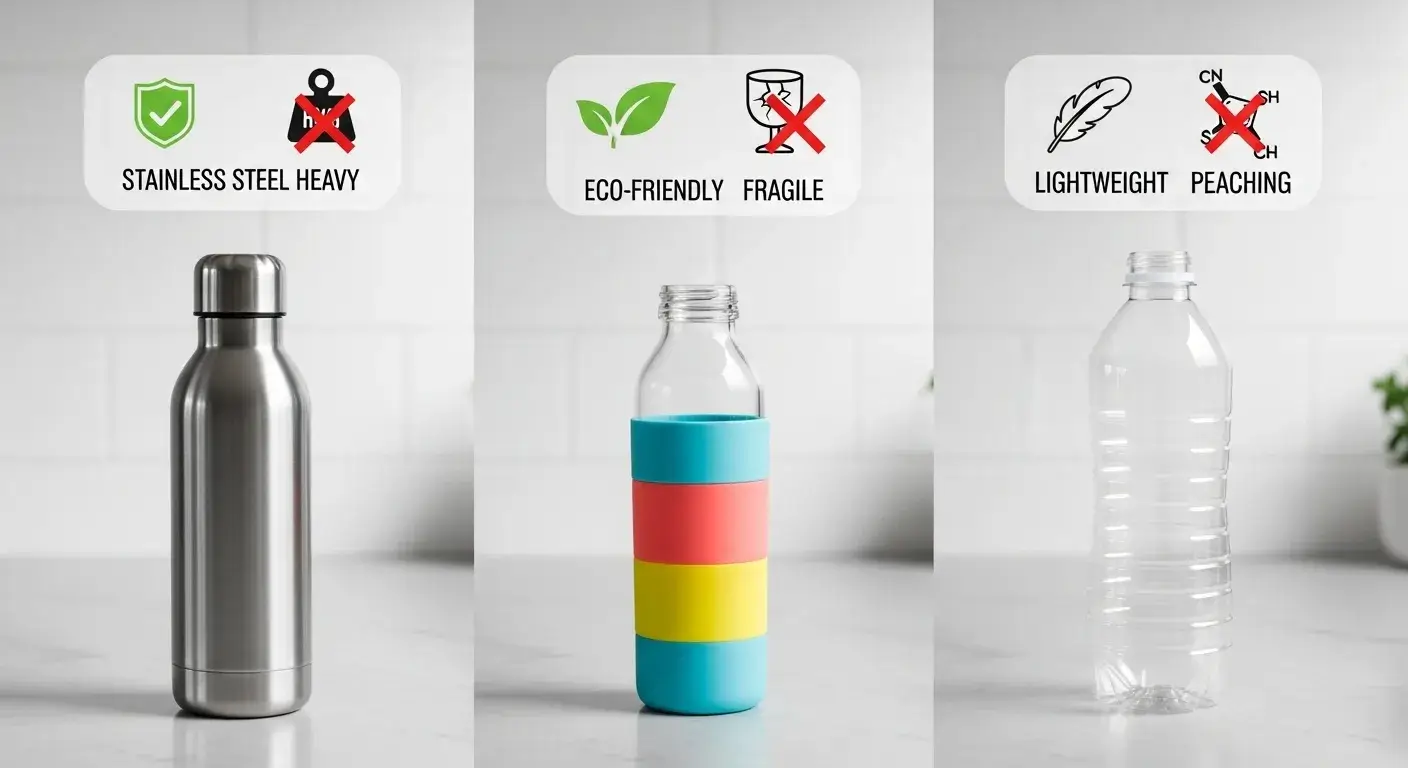
Pros and Cons of Bottle Materials
| Material | Pros | Cons |
|---|---|---|
| Stainless Steel | Durable, safe, reusable | Dents easily, not microwave-safe |
| Glass | Inert, easy to clean | Fragile, heavier |
| Plastic (PET/PP) | Lightweight, cheap | Degrades, can harbor bacteria |
Choose stainless steel or glass for long-term health and hygiene.
How often should you clean your reusable water bottle to prevent bacteria?
Daily is a must.
Experts recommend washing your bottle with hot, soapy water every day and deep-cleaning it weekly.
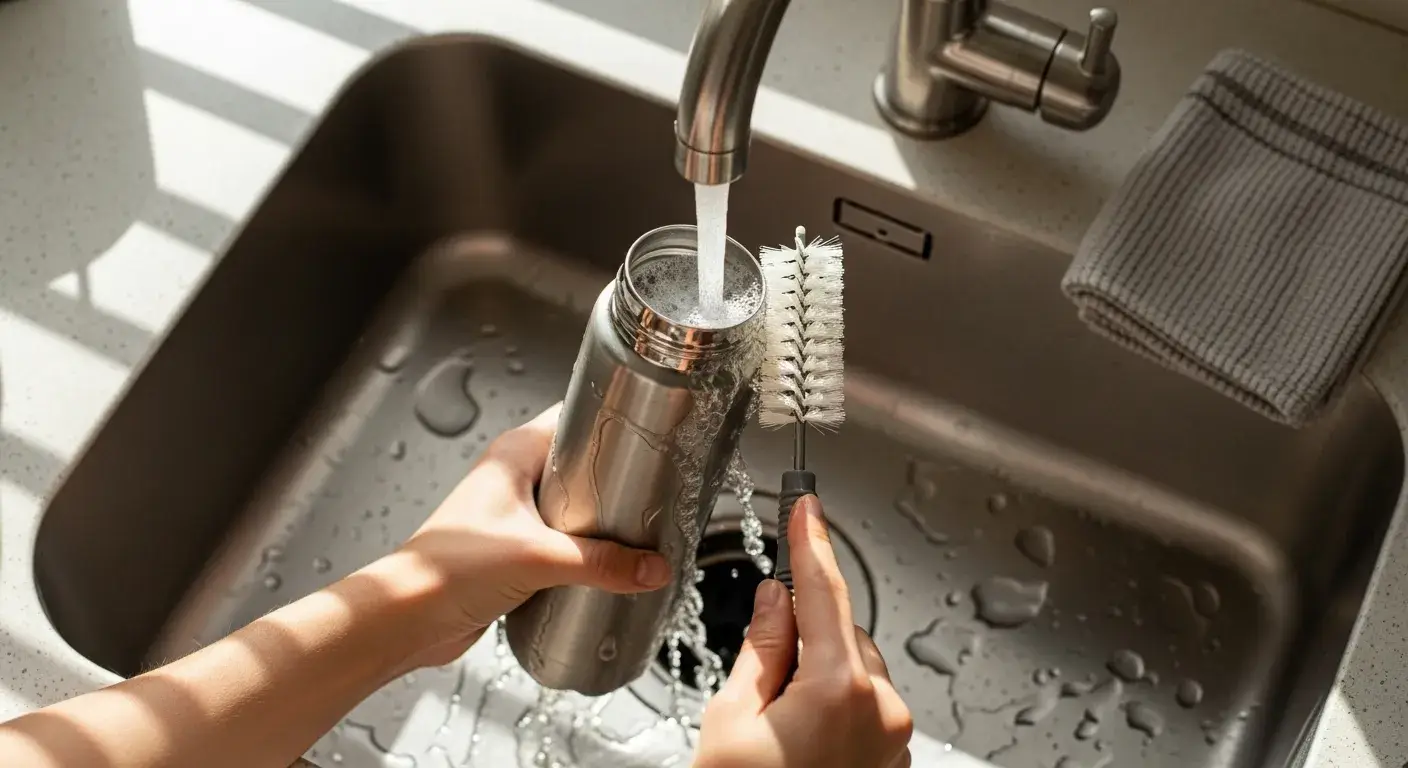
Cleaning Tips
- Daily: Hot, soapy water and a bottle brush
- Weekly: Use vinegar, baking soda, or boiling water
- Dry completely before closing or storing
- Don't share bottles to prevent cross-contamination
Dishwashers may not clean narrow mouths or caps effectively.
What signs indicate it's time to replace your reusable water bottle?
Look for wear and weird smells.
Replace your bottle if it shows cracks, discoloration, leaks, or persistent odors that don't go away with cleaning.
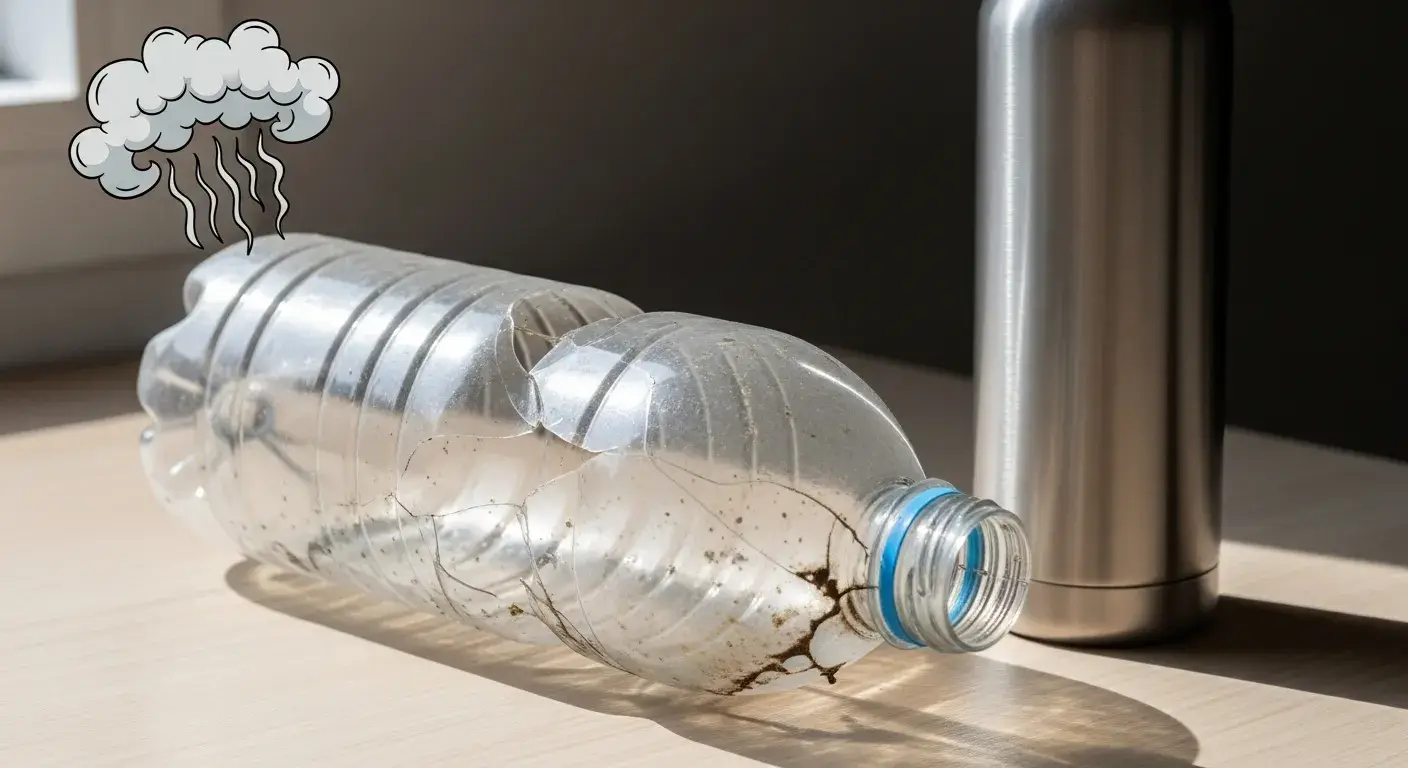
Signs It's Time for a New Bottle
- Visible cracks or dents
- Foul smell despite cleaning
- Loose or broken lids
- Discoloration or chalky residue
- Mold in caps or straws
Replacing a bottle is safer than risking contamination.
Can chemicals leach from old or damaged reusable water bottles?
Yes—especially plastic ones.
Scratched or degraded plastic bottles can leach chemicals like BPA, especially when exposed to acidic drinks or heat.
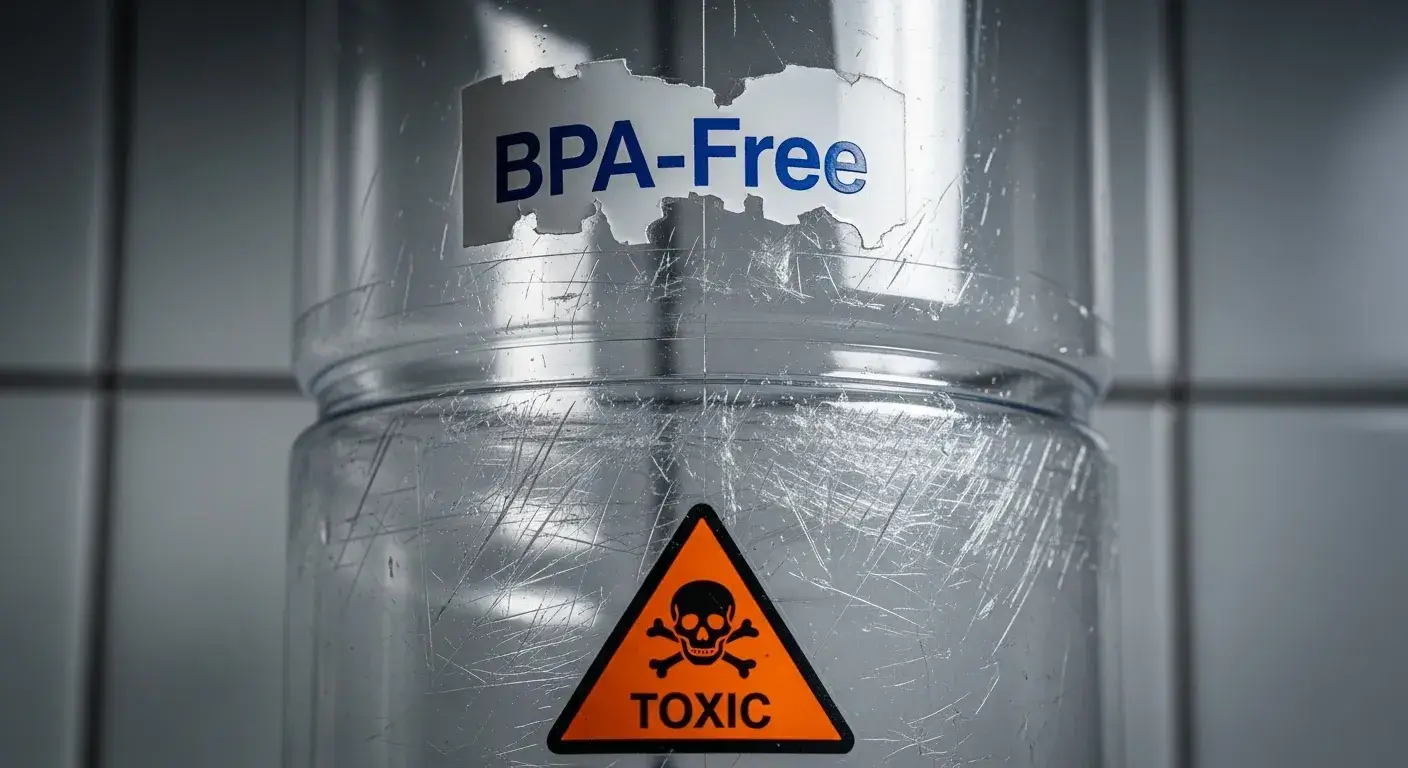
Leaching Risks
- Plastic types: PET and polycarbonate are more prone to chemical leaching3
- Triggers: Heat, acidic liquids, UV exposure
- Safer options: Stainless steel, borosilicate glass
Avoid reusing single-use bottles, which are not designed for repeat use.
What are the best practices to maintain and sanitize reusable water bottles?
Clean, dry, and inspect regularly.
Thorough cleaning, air drying, and occasional sanitizing will keep your bottle safe and extend its life.
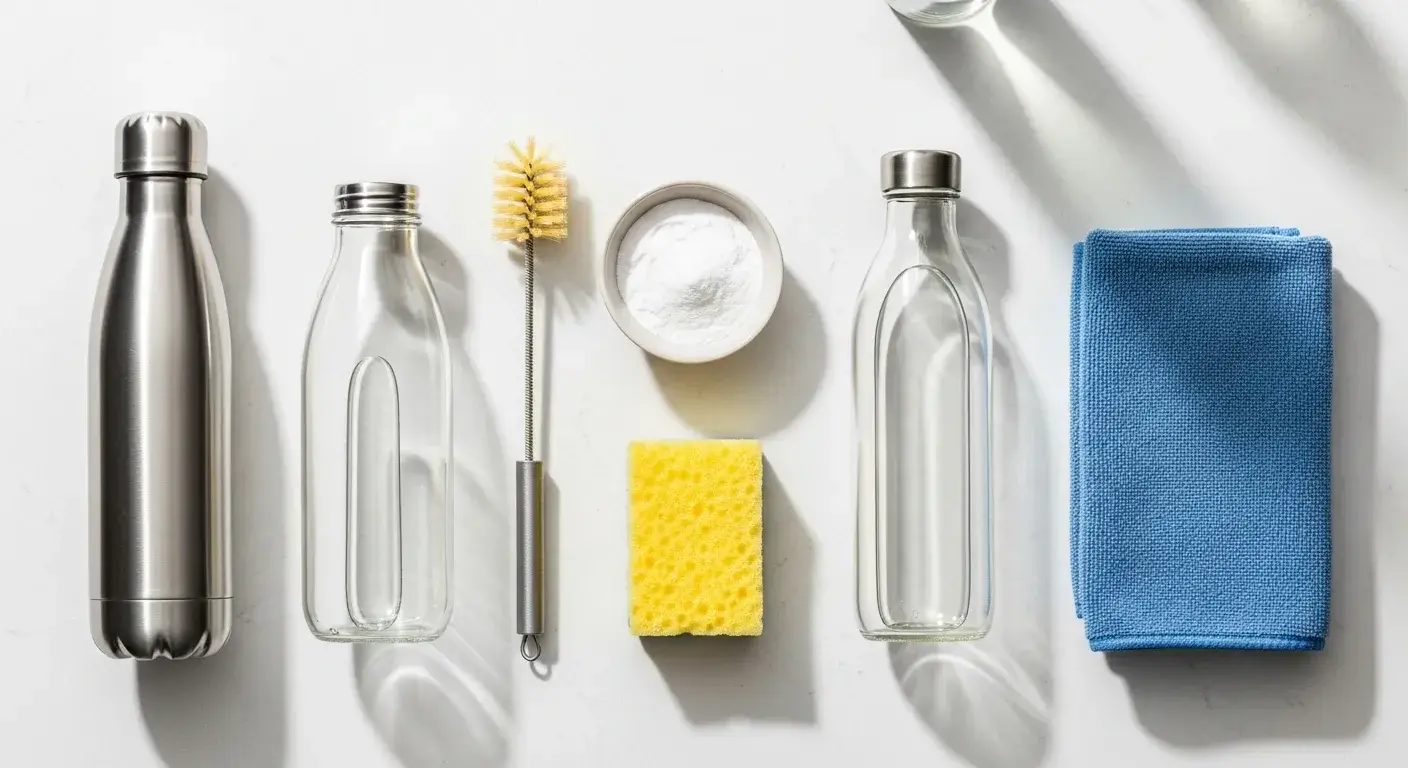
Best Maintenance Habits
- Wash daily with hot, soapy water
- Deep clean weekly with vinegar or baking soda
- Air dry upside down without the cap
- Use bottle brushes to reach all areas
- Clean caps and lids separately
Never store water in a sealed bottle for days—bacteria thrive in moisture.
Are some reusable water bottle materials safer than others for long-term use?
Yes—choose wisely.
Stainless steel and glass bottles are safest for long-term use4 due to their durability and non-toxic nature.
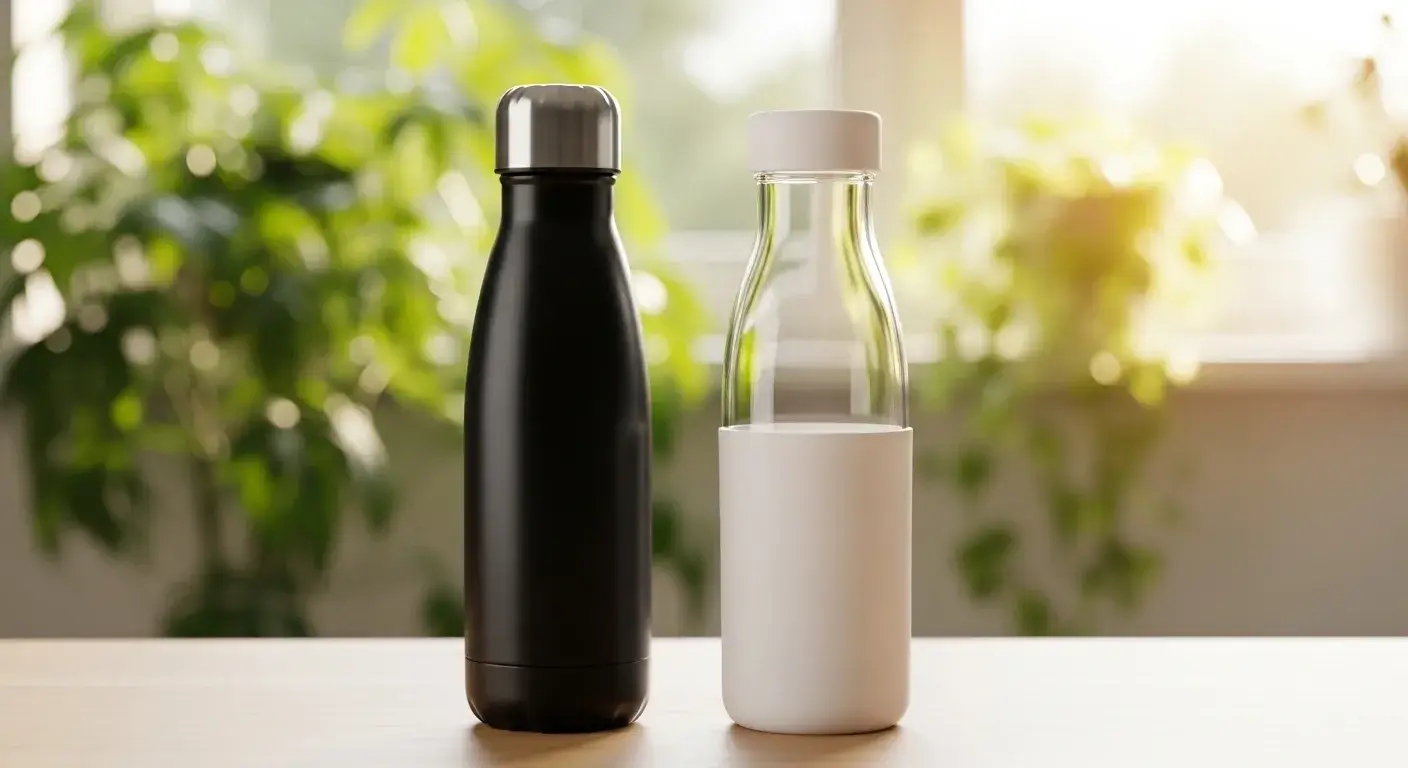
Safety Rankings by Material
- Stainless Steel – Most durable and safe
- Glass – Inert, great for taste but fragile
- Hard Plastic – OK short-term, but degrades faster
- Single-use PET – Not safe for reuse
Check for food-safe certifications before buying any bottle.
How do acidic or sugary drinks affect the durability and safety of reusable bottles?
They speed up wear.
Acidic or sugary liquids can corrode plastic and affect metal over time, increasing bacteria growth and chemical leaching.
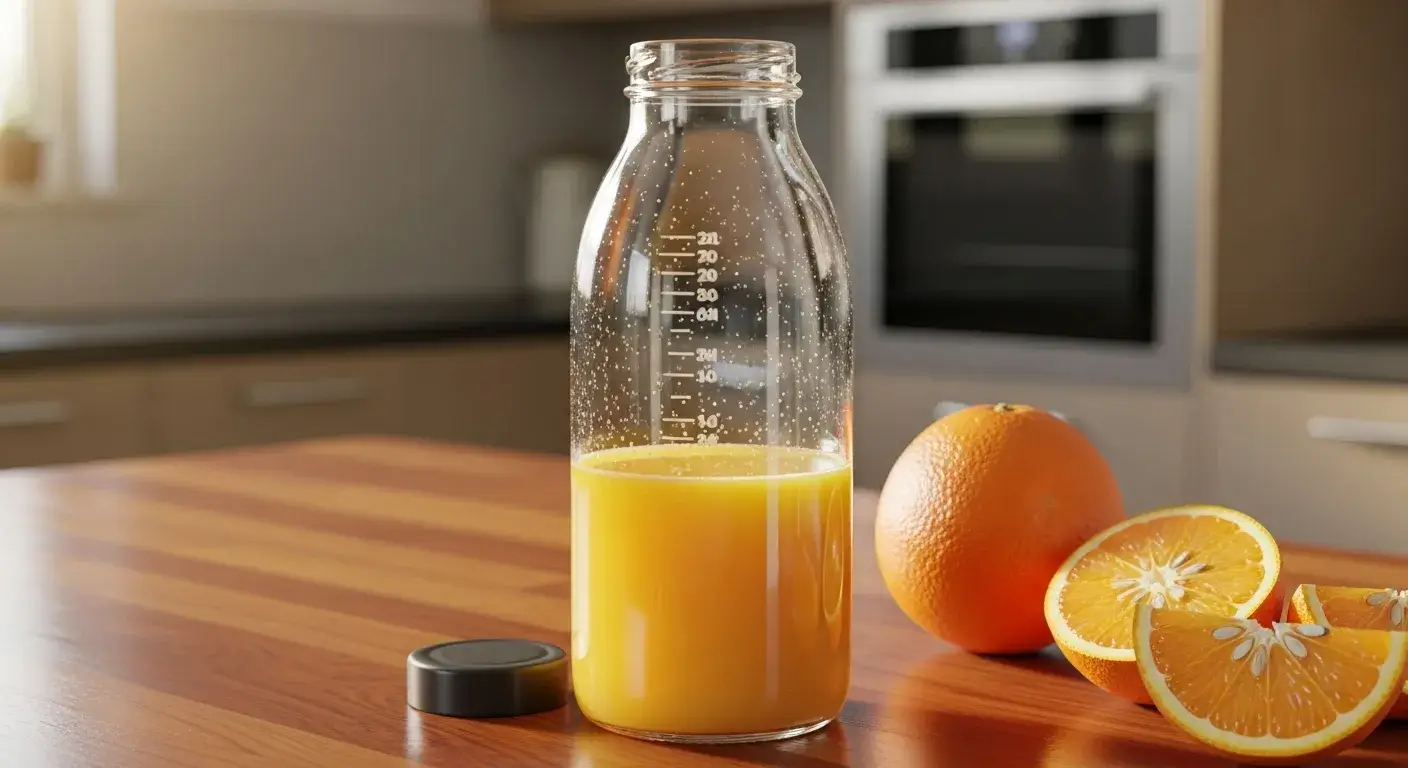
Tips for Acidic Drink Use
- Rinse bottles immediately after juice or soda
- Don't store acidic drinks overnight
- Use glass or stainless steel for non-water beverages
Plastic breaks down faster under acidic conditions.
What are the risks of bacterial growth in reusable water bottles?
A dirty bottle becomes a petri dish.
Bacteria can grow inside bottles within 24–48 hours5 if not cleaned, posing risks for illness and bad taste.
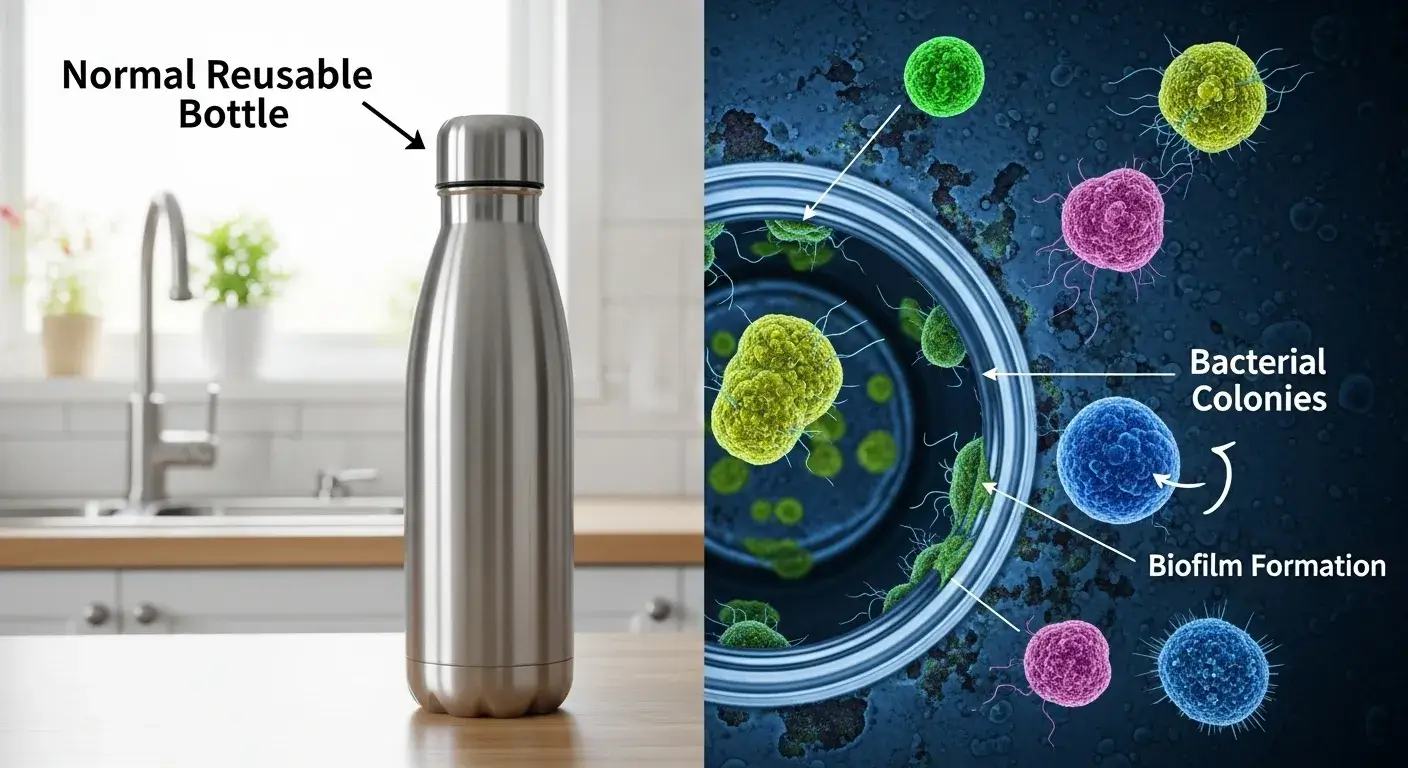
Common Growth Risks
- Saliva backwash
- Leftover beverage residue
- Infrequent cleaning
- Storing water for too long
These risks multiply when bottles are shared or left in warm places.
Conclusion
Reusable bottles are safe—if cleaned daily and replaced when worn. Choose stainless steel or glass for best long-term use.
FAQs
Can I use my reusable water bottle every day?
Yes, but you must clean it daily to avoid bacteria buildup.
Is it safe to put reusable bottles in the dishwasher?
Only if labeled dishwasher-safe. Still, scrub by hand for best results.
Can I use my reusable bottle for coffee or juice?
Yes, but clean immediately afterward to avoid residue and damage.
Should I stop using a bottle if it smells bad?
Yes. Persistent odors indicate bacteria or mold and mean it's time to replace it.
How can I deep clean my bottle at home?
Fill it with baking soda and warm water, let sit overnight, scrub, and rinse thoroughly.
-
This peer-reviewed study from the National Institutes of Health examines microbial populations in daily-use water bottles, demonstrating that biofilms form rapidly on bottle surfaces and that stainless steel harbors significantly fewer bacteria than plastic (PET) bottles. ↩
-
This comprehensive scientific review published in the Journal of Water and Health analyzes BPA and phthalate contamination in commercial water bottles, documenting how these chemicals leach into water over time and the associated health risks including endocrine disruption. ↩
-
This expert Q&A from Johns Hopkins Bloomberg School of Public Health explains BPA exposure risks, when chemicals leach from plastic containers (especially with heat), and provides guidance on choosing safer water bottle materials for different populations. ↩
-
This detailed article examines the safety benefits of food-grade stainless steel water bottles (304/316 grades), explaining why they don't leach chemicals, resist bacterial growth better than plastic, and provide superior durability for long-term use. ↩
-
This Fortune Well article reports on scientific research showing that over 20% of reusable water bottles contain fecal coliform bacteria, and explains how moisture, contamination, and warm temperatures create ideal conditions for bacterial growth within 24-48 hours without proper cleaning. ↩

